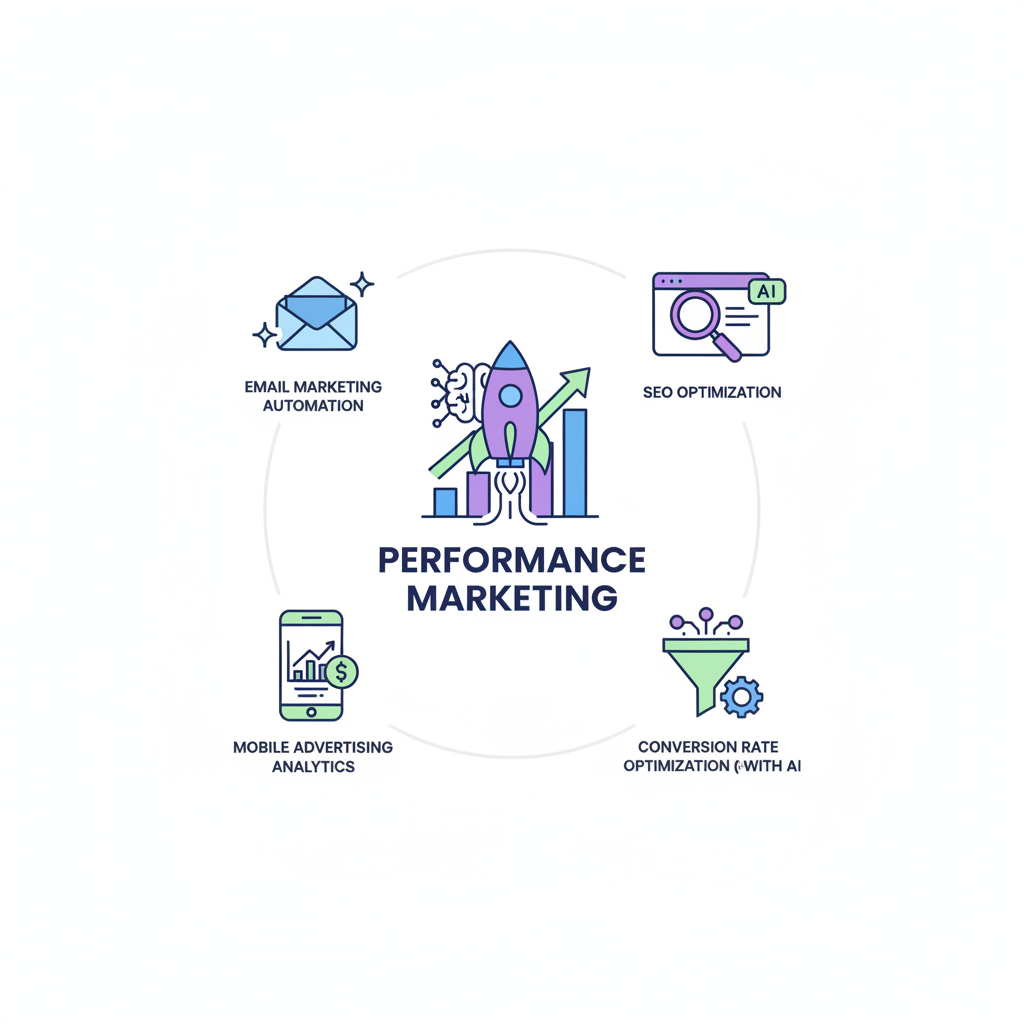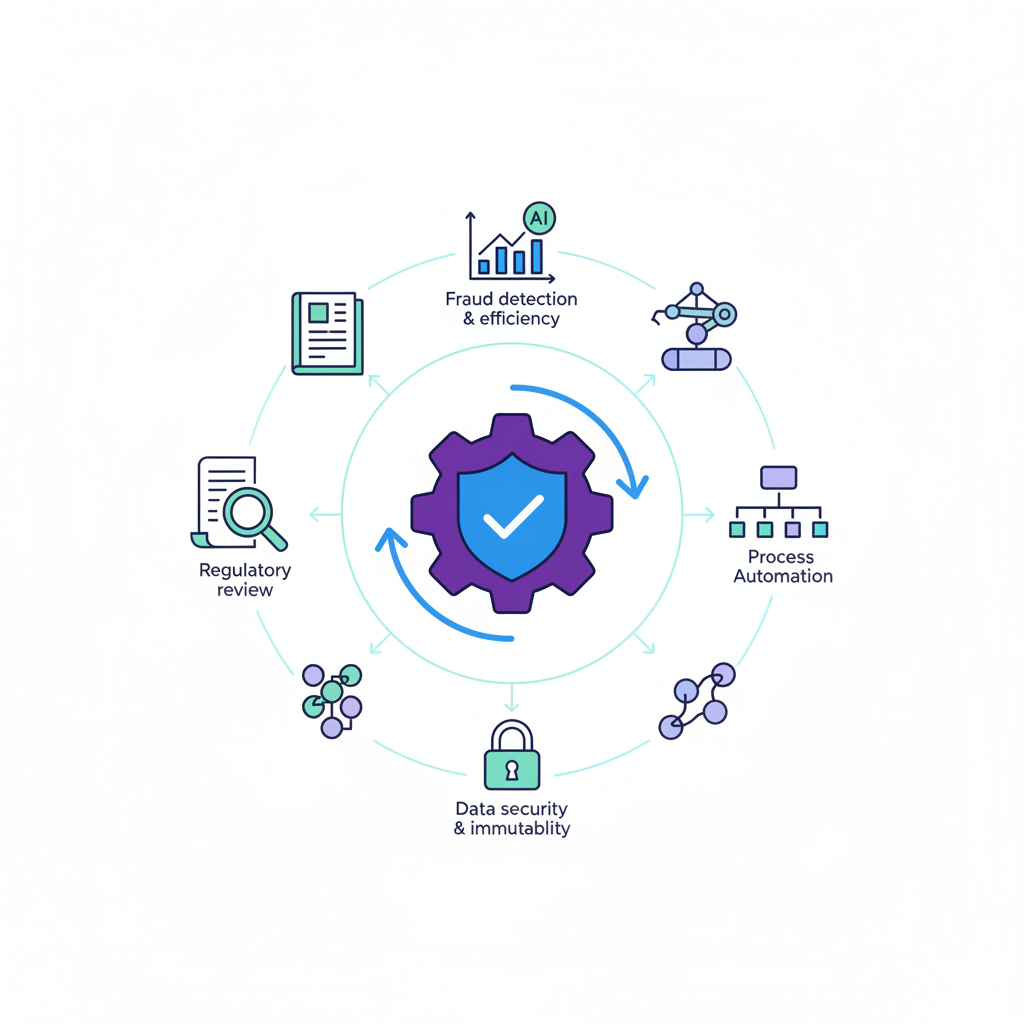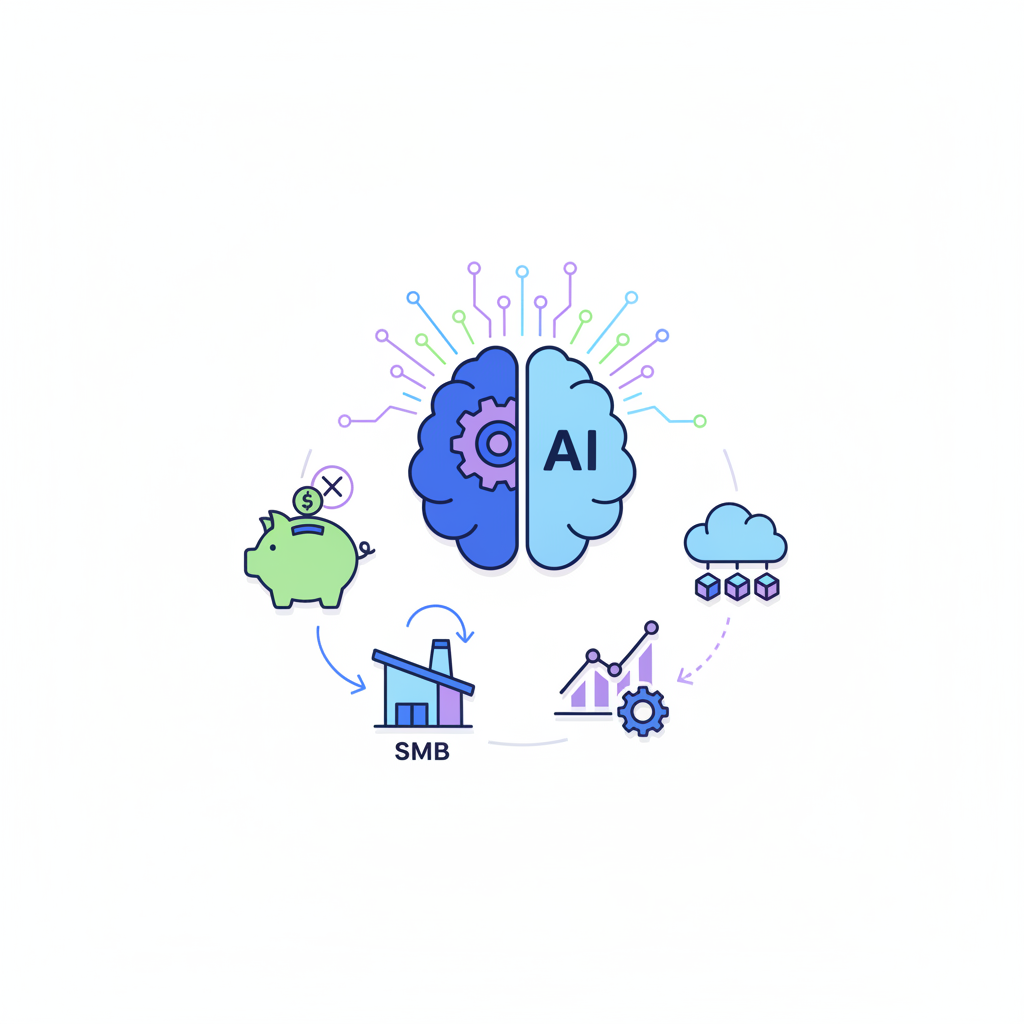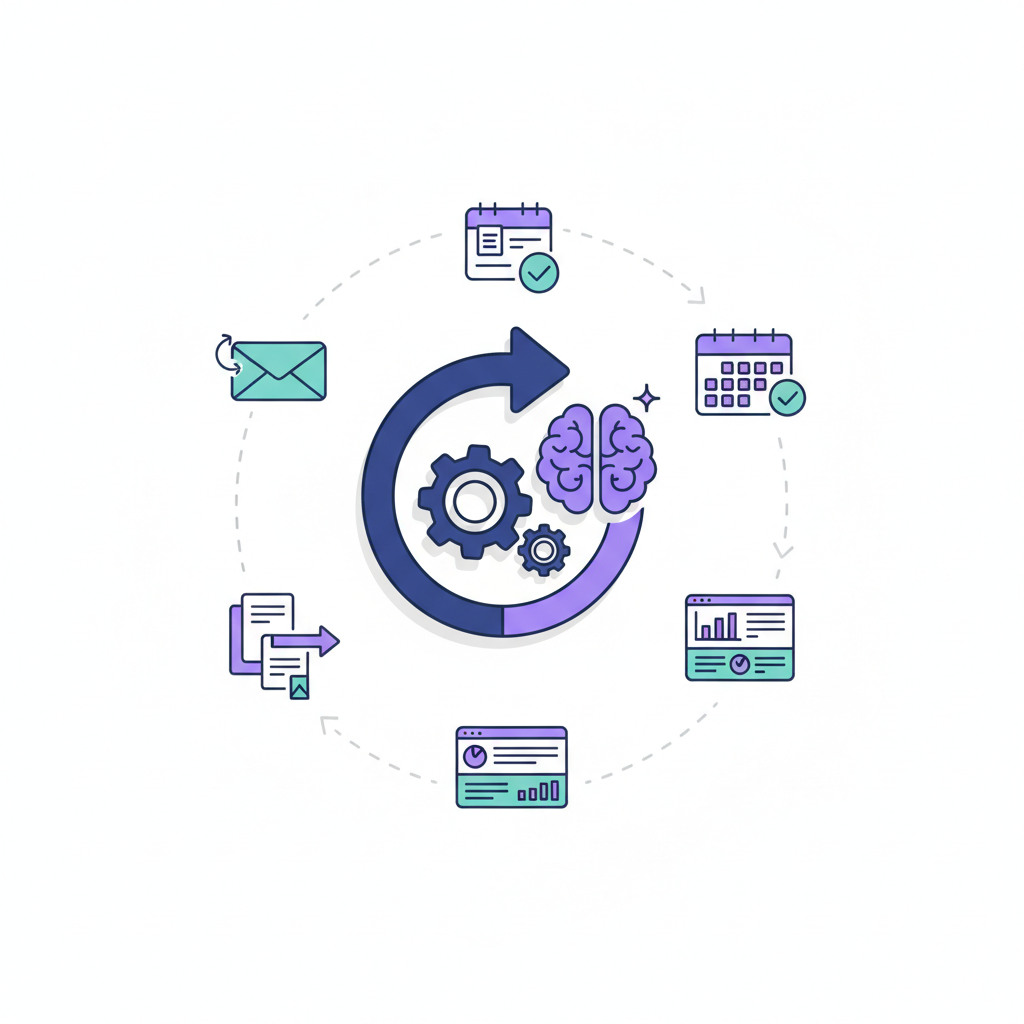Top 10 AI Tools for Performance Marketing
Explore the top 10 AI tools for performance marketing in 2025, including AdCreative.ai, Smartly.io, Optimove, Dynamic Yield, GA4, Branch, Looker Studio, Semrush, Similarweb, and ChatGPT. Learn how AI boosts ROI, ROAS, personalization, and analytics.

Unlocking Performance: The Power of AI in Modern Marketing
The rapidly evolving and intensely competitive landscape of performance marketing demands cutting-edge solutions to stay ahead. In today's digital age, marketers are constantly challenged to optimize return on investment (ROI), manage vast quantities of data, and achieve hyper-personalization at an unprecedented scale. Traditional methods often fall short, leading to missed opportunities and inefficient ad spend. This is where Artificial Intelligence (AI) steps in, offering unprecedented capabilities to enhance efficiency, effectiveness, and strategic decision-making across all facets of your campaigns. AI tools for performance marketing are no longer just a futuristic concept; they are a present-day necessity, empowering businesses to transform marketing performance with AI. This comprehensive guide will explore how AI is revolutionizing performance marketing and deep dive into the best AI marketing tools that can truly transform your campaigns, giving you a significant competitive edge.
How AI is Revolutionizing Performance Marketing Metrics
Understanding what is AI used for in marketing reveals its profound impact on key performance metrics. AI's ability to process and analyze vast datasets far exceeds human capacity, identifying intricate patterns and predicting trends that would otherwise remain hidden. This advanced data analysis and insights capability allows marketing teams to make more informed decisions, moving beyond guesswork to data-driven strategies.
Predictive analytics and forecasting, powered by AI, enable marketers to anticipate campaign performance, identify potential issues before they escalate, and proactively optimize budgets. This foresight is crucial for maximizing efficiency and minimizing waste. Furthermore, AI drives significant automation and efficiency by taking over repetitive tasks such as bid management, report generation, and A/B testing. This frees up valuable time for marketing teams to focus on higher-level strategic thinking and creative development, rather than getting bogged down in manual operations.
Hyper-personalization and segmentation are areas where digital marketing AI truly shines. By analyzing individual user behavior and preferences, AI can deliver highly relevant content and offers to precise audience segments, dramatically improving engagement and conversion rates. The direct impact on marketing performance metrics is undeniable: AI directly improves ROI by optimizing spend, reduces Cost Per Acquisition (CPA) through better targeting, boosts Return on Ad Spend (ROAS) with smarter bidding, increases conversion rates via personalization, and enhances lead quality by identifying the most promising prospects. This comprehensive application of artificial intelligence in marketing fundamentally reshapes how marketing teams use artificial intelligence to drive superior campaign performance.
Choosing the Right AI Tools for Your Performance Marketing Stack
Selecting the ideal AI tools for performance marketing teams can feel overwhelming given the plethora of options available. To make an informed decision, it’s crucial to have a clear framework. First, define your needs and goals. What specific performance marketing challenges are you trying to solve? Are you struggling with ad spend optimization, lead quality, or creative fatigue? What desired metric improvements are you aiming for, such as a lower CPA, higher ROAS, or increased Customer Lifetime Value (LTV)? Clearly identifying these objectives will narrow down your search for suitable marketing solutions.
Next, assess integration capabilities. Seamless compatibility with your existing tech stack is paramount. Will the AI tool integrate smoothly with your CRM, ad platforms like Google Ads or Meta Ads, and analytics tools such as GA4? A tool that requires extensive manual data transfer or complex workarounds will negate its efficiency benefits.
Scalability and flexibility are also critical considerations. Choose tools that can grow with your business and adapt to evolving campaign complexities and market demands. A solution that works for a small campaign today might not handle enterprise-level operations tomorrow. Evaluate the ease of use and learning curve; your marketing teams should be able to adopt and master the tool without significant time or resource investment. A user-friendly interface and robust support are key.
Finally, consider pricing and ROI. Understand the cost structure—whether it’s free, subscription-based, or usage-based. Explore AI marketing tools paid and free options, as some powerful tools offer free tiers or trials. Crucially, calculate the potential return on investment. Will the efficiency gains, improved metrics, and strategic advantages justify the cost? Ensure compliance with data privacy and security regulations (like GDPR, CCPA) to protect your customer data and maintain trust.
AI Tools for Ad Optimization & Creative Strategy
Optimizing ad performance and developing winning ads are critical for any performance marketer. AI tools in this category focus on generating high-performing ad creatives and copy, optimizing bids, and automating ad management to scale marketing efforts effectively.
Tool 1: Ad Creative AI / Jasper for Ads
Specific Application: These AI-powered platforms excel at generating diverse ad copy, compelling headlines, and even visual concepts based on your input and target audience. They can also provide recommendations for A/B testing variations, helping you refine your creative strategy.
Benefits for Performance Marketers: Marketers can achieve faster creative iteration cycles, allowing for more experimentation and rapid deployment of new campaigns. This often leads to higher Click-Through Rates (CTR) and lower Cost Per Acquisition (CPA) as the AI identifies and amplifies what resonates best with your audience.
Metrics Impacted: Click-Through Rate (CTR), Conversion Rate, Cost Per Acquisition (CPA), Return on Ad Spend (ROAS).
Best for: Rapid Creative Generation & Testing.
Pros/Cons: Pros: Incredible speed in generating variations, helps overcome creative blocks, data-driven suggestions. Cons: Requires human oversight to ensure brand voice and quality, may lack nuanced understanding of complex campaigns.
Tool 2: Smartly.io / Marin Software
Specific Application: These are robust platforms designed for automated ad buying, dynamic creative optimization, and sophisticated bidding strategies across multiple major advertising platforms, including Meta, Google, and Pinterest. They leverage AI to manage complex campaigns at scale.
Benefits for Performance Marketers: By automating bid adjustments and creative variations in real-time, these tools maximize ad spend efficiency and help achieve specific ROAS targets. They enable marketers to scale campaigns effortlessly without increasing manual workload, ensuring consistent campaign performance.
Metrics Impacted: Return on Ad Spend (ROAS), Cost Per Acquisition (CPA), Ad Spend Efficiency, Impression Share.
Best for: Large-Scale Ad Automation & Bidding Optimization.
Pros/Cons: Pros: Comprehensive features for enterprise-level ad management, significant time savings, advanced optimization capabilities. Cons: Can be complex for beginners, higher cost due to extensive feature set, requires a certain level of ad spend to justify investment.
AI Tools for Audience Segmentation & Personalization
Understanding customer behavior and delivering hyper-targeted, personalized experiences are cornerstones of effective performance marketing. These AI marketing solutions focus on creating precise audience segments and orchestrating tailored interactions.
Tool 3: Optimove / Segment
Specific Application: These platforms function as Customer Data Platforms (CDPs) enhanced with AI capabilities for predictive segmentation, churn prevention, and sophisticated customer journey orchestration. They consolidate customer data from various sources to build a unified profile.
Benefits for Performance Marketers: By leveraging AI to predict future customer behavior, marketers can significantly improve customer lifetime value (CLTV) through highly targeted campaigns. The ability to identify customers at risk of churn allows for proactive retention strategies, while precise segmentation ensures marketing messages resonate deeply with specific groups. This leads to more effective digital marketing AI strategies.
Metrics Impacted: Customer Lifetime Value (CLTV), Conversion Rate, Retention Rate, Customer Acquisition Cost (CAC).
Best for: Predictive Customer Segmentation & Retention.
Pros/Cons: Pros: Provides deep, actionable customer insights, enables highly personalized communication, strong for retention and loyalty programs. Cons: Requires significant data integration effort, can be complex to set up and manage initially, potentially high cost for comprehensive features.
Tool 4: Dynamic Yield / Braze
Specific Application: These are powerful AI-powered platforms specializing in real-time personalization across various customer touchpoints, including websites, mobile apps, and email campaigns. They allow for dynamic content delivery, product recommendations, and A/B testing of personalized experiences.
Benefits for Performance Marketers: By delivering highly relevant content and offers at the right moment, these tools enhance the user experience, leading to higher engagement and increased conversion rates. They ensure that every interaction is tailored, improving overall marketing performance by making each customer feel understood and valued.
Metrics Impacted: Conversion Rate, Engagement Rate, Average Order Value (AOV), Bounce Rate.
Best for: Real-time Personalization & Experience Optimization.
Pros/Cons: Pros: Delivers truly individualized experiences, boosts key conversion metrics, supports multi-channel personalization. Cons: Can have a steep implementation complexity, requires ongoing content and strategy input, potential for data silos if not integrated properly.
AI Tools for Analytics, Attribution & Reporting
Gaining deeper insights from vast amounts of data, accurately understanding multi-touch attribution, and automating performance reporting are vital for optimizing campaign performance. These digital marketing AI tools streamline data analysis and provide actionable intelligence.
Tool 5: Google Analytics 4 (AI features) / Mixpanel
Specific Application: Google Analytics 4 (GA4) incorporates AI-driven insights, anomaly detection, and predictive metrics such as churn probability and purchase probability. It offers automated user journey analysis, allowing marketers to understand how users interact with their websites and apps across different touchpoints. Mixpanel focuses on product analytics, providing deep insights into user behavior within an application.
Benefits for Performance Marketers: These tools provide a deeper understanding of user behavior, enabling proactive identification of issues and opportunities. Marketers can make data-driven optimization decisions, improving overall marketing performance by focusing on what truly drives engagement and conversions.
Metrics Impacted: Conversion Rate, User Engagement, Funnel Drop-offs, Predictive LTV.
Best for: AI-Powered Web & App Analytics.
Pros/Cons: Pros: GA4 is free and deeply integrated with Google's ecosystem; Mixpanel offers granular event-based tracking. Both provide powerful AI insights. Cons: GA4 has a learning curve due to its new data model; Mixpanel can be costly for high-volume data.
Tool 6: Branch / AppsFlyer (for mobile attribution)
Specific Application: Essential for mobile-first businesses, these platforms offer AI-powered mobile attribution, deep linking capabilities, and robust fraud detection. They accurately measure the performance of mobile campaigns across various channels and identify fraudulent installs or clicks.
Benefits for Performance Marketers: Accurate campaign measurement ensures that ad spend is attributed correctly, allowing for precise optimization of mobile ad campaigns. Prevention of ad fraud saves significant budget, directly improving ROAS and ensuring that marketing efforts are genuinely impactful.
Metrics Impacted: ROAS, Cost Per Install (CPI), Mobile LTV, Fraud Rate.
Best for: Mobile App Attribution & Fraud Prevention.
Pros/Cons: Pros: Critical for understanding mobile campaign effectiveness, strong fraud protection, supports complex deep linking scenarios. Cons: Highly specific use case, can be an additional cost for mobile-only tracking, integration can be technical.
Tool 7: Looker Studio (with AI integrations) / Datorama
Specific Application: These tools specialize in automated data aggregation from disparate sources (ad platforms, CRMs, analytics tools), AI-driven data visualization, and the creation of customizable performance dashboards. They consolidate all your marketing data into a single, coherent view.
Benefits for Performance Marketers: Marketers save significant time on manual reporting, gaining actionable insights from complex, cross-channel data. They provide a unified view of overall campaign performance, making it easier to identify trends, pinpoint issues, and communicate results to stakeholders.
Metrics Impacted: Overall Campaign Performance, ROI, Cross-Channel Performance.
Best for: Automated Reporting & Cross-Channel Insights.
Pros/Cons: Pros: Centralized data view, customizable dashboards, automates tedious reporting tasks. Cons: Initial setup can be complex, requires expertise in data connectors, Datorama can be expensive.
AI Tools for Market Analysis & SEO Performance
To truly scale marketing efforts and grow your business, understanding the market and optimizing for search engines is paramount. These AI tools provide competitive intelligence, enhance keyword research, and streamline content optimization, leveraging artificial intelligence marketing to boost organic visibility.
Tool 8: Semrush (AI features) / Surfer SEO
Specific Application: Semrush integrates AI-driven content optimization suggestions, keyword gap analysis, topic clustering, and comprehensive competitive SEO analysis. Surfer SEO focuses heavily on content optimization, providing real-time recommendations based on top-ranking content.
Benefits for Performance Marketers: By using these tools, marketers can significantly improve organic rankings and achieve higher search visibility. They enable a data-backed content strategy, ensuring that content is not only relevant but also optimized to perform well in search engine results, leading to increased organic traffic and engagement.
Metrics Impacted: Organic Traffic, Keyword Rankings, SERP Visibility, Content Engagement.
Best for: SEO Content Optimization & Keyword Strategy.
Pros/Cons: Pros: Comprehensive SEO suite, provides actionable insights for content creation, helps identify high-potential keywords. Cons: Can have a significant subscription cost, requires ongoing effort to implement recommendations, data can sometimes be overwhelming.
Tool 9: Similarweb (AI features) / Brandwatch
Specific Application: Similarweb leverages AI for competitive intelligence, market trend analysis, audience insights, and detailed digital traffic analysis across websites and apps. Brandwatch focuses on social listening and consumer intelligence, using AI to analyze conversations and trends.
Benefits for Performance Marketers: These tools provide informed strategic decisions by offering deep insights into competitor strategies and market dynamics. They help identify new market opportunities and allow for accurate benchmarking against industry leaders, crucial for any business looking to scale marketing operations.
Metrics Impacted: Market Share, Competitive Benchmarking, Audience Demographics, Traffic Sources.
Best for: Competitive & Market Intelligence.
Pros/Cons: Pros: Offers deep insights into market trends and competitor performance, valuable for strategic planning and identifying gaps. Cons: Data accuracy can sometimes be limited for smaller websites, premium features can be costly, requires careful interpretation of data.
Tool 10: ChatGPT / Bard (for ideation & content generation)
Specific Application: Large Language Models like ChatGPT and Bard are powerful AI tools for generating content ideas, drafting ad copy, outlining blog posts, creating social media posts, and summarizing initial research. They act as versatile content assistants.
Benefits for Performance Marketers: These tools dramatically increase content velocity, helping marketers overcome writer's block and produce diverse content formats quickly. While they don't directly impact metrics, they indirectly contribute to better engagement through more consistent and varied content. This is a foundational tool for any marketing teams looking to enhance their content production.
Metrics Impacted: Content Production Efficiency, Engagement (indirectly through better content quality and volume).
Best for: Content Ideation & Draft Generation.
Pros/Cons: Pros: Extremely versatile, free or low-cost access, speeds up content creation significantly, can generate creative ideas. Cons: Requires careful prompting for best results, output needs human review for accuracy and brand voice, can sometimes produce generic content.
The Evolving Landscape: Future of AI in Performance Marketing
The trajectory of artificial intelligence marketing indicates an even more integrated and sophisticated future. Marketers should anticipate hyper-automation, where AI will automate increasingly complex tasks, from initial campaign setup to full-cycle optimization across multiple channels. We're moving beyond simple predictions to predictive and prescriptive AI, which not only forecasts outcomes but also offers actionable recommendations for optimal results.
A growing focus will be on ethical AI and transparency, addressing concerns around bias detection, data privacy, and the need for explainable AI to build trust with consumers and regulators. Voice and conversational AI will further integrate into search and customer service, opening up new performance channels and interaction models. Expect to see more integrated platforms that seamlessly combine various AI functionalities into all-in-one marketing solutions. Ultimately, the future demands that marketers become AI strategists, leveraging these powerful tools for strategic decisions rather than just operational tasks, ensuring digital marketing AI continues to drive innovation.
Embrace the AI Advantage for Superior Performance
In conclusion, the transformative power of AI tools for performance marketing is undeniable. From revolutionizing creative generation and ad optimization to enabling precise audience segmentation and delivering deep, actionable analytics, AI is reshaping every facet of how marketing teams operate. The top 10 AI marketing tools highlighted in this guide demonstrate the breadth and depth of capabilities available, offering solutions for everything from boosting campaign performance to scaling your business through enhanced SEO and market intelligence.
AI is no longer a luxury but an essential component for any performance marketer looking to gain a competitive edge, maximize ROI, and achieve sustainable growth in an increasingly data-driven world. The ability to process vast amounts of data, automate mundane tasks, and personalize experiences at scale provides an unparalleled advantage. We encourage you to explore these AI tools for performance marketing, experiment with their capabilities, and begin integrating artificial intelligence marketing into your strategies. By doing so, you can unlock new levels of efficiency, effectiveness, and ultimately, superior performance for all your marketing endeavors.
Frequently Asked Questions About AI in Performance Marketing
Q1: What is performance marketing AI?
Performance marketing AI refers to the application of artificial intelligence technologies and machine learning algorithms to optimize, automate, and enhance various aspects of performance marketing campaigns. This includes tasks like ad targeting, bid management, creative optimization, audience segmentation, and data analysis, all aimed at improving key metrics like ROI, ROAS, and conversions.
Q2: How can AI improve my ROAS (Return on Ad Spend)?
AI improves ROAS by optimizing ad spend efficiency. It analyzes vast datasets to identify the most effective ad placements, audiences, and creative elements, then automates bidding strategies to maximize conversions at the lowest possible cost. By predicting performance and adjusting campaigns in real-time, AI ensures your budget is allocated to the most impactful areas, directly boosting your Return on Ad Spend.
Q3: Are there free AI tools for performance marketing?
Yes, there are several free AI marketing tools available, especially for specific tasks. Google Analytics 4 offers powerful AI-driven insights for free. Tools like ChatGPT and Bard provide free tiers for content ideation and generation. Many paid AI tools for performance marketing teams also offer free trials or limited free versions, allowing marketers to test their capabilities before committing to a subscription.
Q4: What are the biggest challenges of implementing AI in marketing?
Implementing AI in marketing can present challenges such as integrating new tools with existing tech stacks, ensuring data quality and privacy, overcoming the initial learning curve for marketing teams, and managing the cost of advanced solutions. Additionally, the need for human oversight to refine AI outputs and maintain brand voice remains crucial.
Q5: How do AI tools help with audience segmentation?
AI tools help with audience segmentation by analyzing vast amounts of customer data—including demographics, behavior, purchase history, and engagement patterns—to identify distinct and highly predictive customer segments. These tools can uncover subtle patterns that human analysis might miss, allowing marketers to create hyper-targeted campaigns with personalized messaging, leading to higher engagement and conversion rates.
Featured Tools

10Web is an AI-powered WordPress platform that offers automated website building, hosting, and optimization with AI assistance for content and image generation.

A global creative platform connecting businesses with freelance designers for custom graphic design projects.

A1.art is an AI art generator that transforms text descriptions into unique digital artworks across various styles.

Acquire.io is a customer engagement platform offering live chat, AI chatbots, co-browsing, and video chat to enhance customer support and sales.

A customer experience automation platform combining email marketing, marketing automation, and CRM with AI-powered personalization.
Top AI Categories
Related Articles

AI for financial services: compliance & automation
Discover how AI is revolutionizing financial services through advanced compliance automation, real-time fraud detection, regulatory reporting, and hyper-personalized customer experiences. Explore the future of intelligent, efficient, and secure banking.

How SMBs can adopt AI without big spending
Discover how small and medium businesses can adopt AI affordably. This practical guide covers low-cost tools, quick wins, real-world examples, and step-by-step strategies to integrate AI without breaking the bank.

Top 10 AI tools for Enterprise Workflow Automation
Enterprises are turning to AI-powered workflow automation to eliminate manual processes, cut costs, and accelerate strategic execution. Unlike traditional automation, AI can handle unstructured data and make intelligent decisions, offering profound benefits across finance, HR, and IT. This guide curates the top 10 AI tools—from RPA leaders like UiPath and Automation Anywhere to iPaaS solutions like Workato and low-code platforms like Microsoft Power Automate—providing a blueprint for building a more agile and resilient organization.